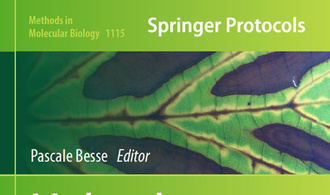Pascale Besse, professor of genetics : "Combining approaches to develop an integrative taxonomy"
Written by Modified on the
We interviewed Pascale Besse, professor of genetics at the University of La Réunion and researcher for UMR PVBMT at the Plant Protection Centre (3P), who recently published a book entitled Molecular Plant Taxonomy: Methods and Protocols*.
What is taxonomy ?
- Taxonomy is the science of describing living organisms and grouping them into unit scalled taxons. Taxonomy originates from the time when man began to gather and hunt. Man then proceeded to name the animals hunted and eaten eventually leading to a first classification of living creatures. Historically, classification and delineation of species were first made ??on purely morphological and anatomical criteria based on external characteristics. Rapidly, taxonomy became an vital field long before conservation or physiology issues of the plant, required naming and defining species.
Your book describes the molecular taxonomy of plants. Can you explain what that means?
- In 1950, Watson and Crick discovered the structure of DNA, which opened the door to the development of molecular tests, which increased dramatically in the 90s with the development of PCR amplification of DNA. Therefore, the taxonomy of plants, which is an ancient discipline, took on a new significance, allowing classification based on reliable genealogy. Although the main objective of plant taxonomy remains the classification of species, the wide range of current molecular approaches provides a better understanding of evolutionary processes, a particularly important issue for some complex taxonomic groups of plants. The challenge now is to integrate these new approaches with those based on morphology. The idea is ultimately to consider taxonomy in a broad sense, bringing it together with phylogeny, showing different evolutionary relationships among taxa.
Why do you need to join these two approaches ?
- Newly developed molecular techniques have led to significant taxonomic revisions. Being very often influenced by the environment, morphological markers cannot, by themselves, constitute reliable classification criteria. The tomato is a perfect example. The tomato belongs to the nightshade family, and was initially called Solanum lycopersicum, but we quickly found that the tomato was significantly different from other species of the Solanum genus such as the potato. It was therefore renamed Lycopersicon esculentum. Modern molecular techniques have recently (2001) caused the tomato to be reclassified into the Solanum genus, thus confirming the initial classification by Linnaeus. New molecular techniques can also study more and more cryptic species which we did not know existed. Molecular taxonomy ultimately leads to a greater level of information.
Can we speak of a "new form" of taxonomy ?
- I don’t think so. The idea is simply to combine both taxonomy and molecular approaches including morphological, anatomical, ecological, bio-geographical and paleobotanical data. This should lead not only a more accurate classification of plant species, but a better understanding of the evolutionary processes at stake. Given the variety of molecular tools available, it is important to choose ones most appropriate for task. Currently, few books have addressed the molecular taxonomy of plants in as much detail. Molecular Plant Taxonomy : Methods and Protocols describes several techniques for Plant Taxonomy based on a molecular approach, including hi-speed, next-generation sequencing techniques through laboratory protocols as well as guidelines on choosing methods and phylogenetic analysis of molecular data. DNA extraction protocols for plant specimens are also available which allow inclusion of old and previously taxonomically identified specimens in modern phylogenies, establishing a direct link between plant taxonomy and molecular taxonomy. The limitations of barcoding in plants are also dealt with.
Your work is indeed a superb resource for laboratory protocols.
- The book is obviously aimed at researchers but also students. In addition to detailed introductions, each chapter includes a list of materials and reagents, and of course the laboratory protocols used and presented as “recipes”. A chapter on avoiding known pitfalls will also, in my opinion, be particularly appreciated by readers.
* Humana Press Inc., Series: Methods in Molecular Biology, Vol. 1115, Besse Pascale (Ed.), 2014.



